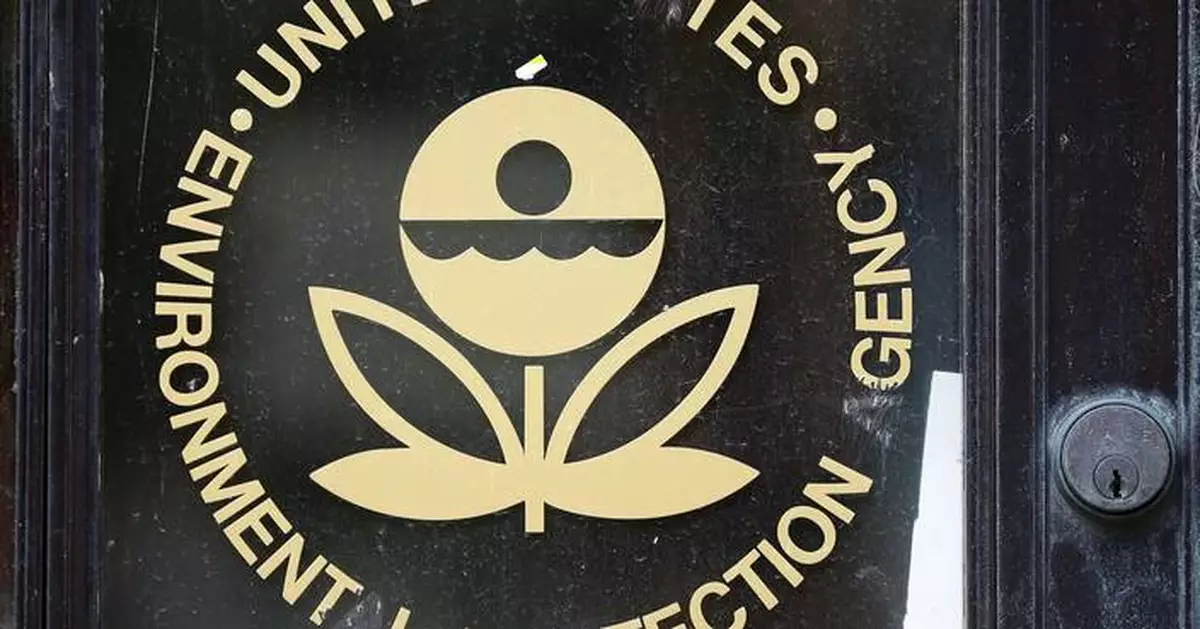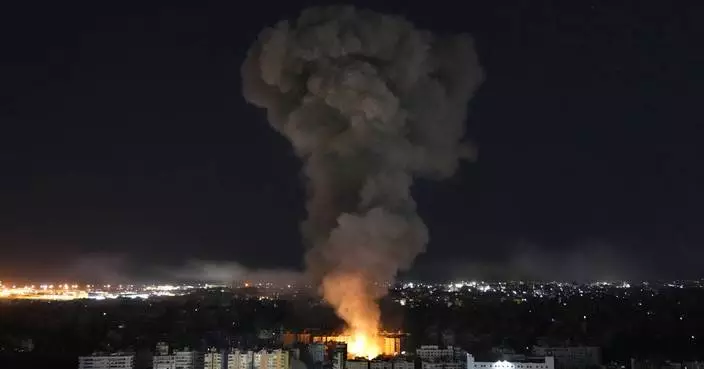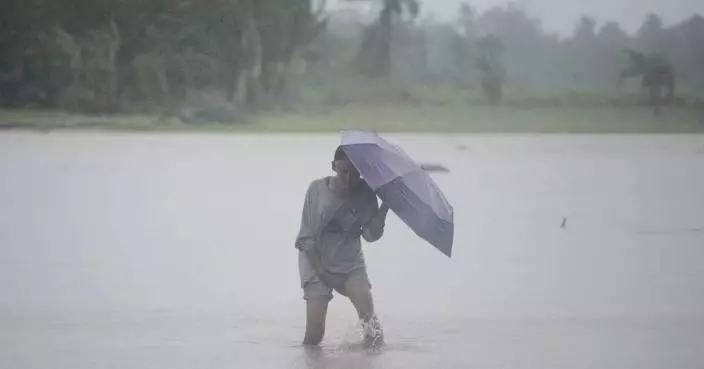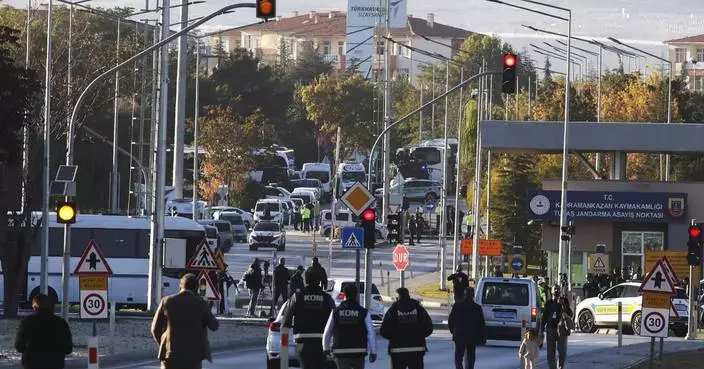WASHINGTON (AP) — Two weeks after setting a nationwide deadline for removal of lead pipes, the Biden administration is imposing strict new limits on dust from lead-based paint in older homes and child-care facilities.
A final rule announced Thursday by the Environmental Protection Agency sets limits on lead dust on floors and window sills in pre-1978 residences and child-care facilities to levels so low they cannot be detected.
Paint that contains lead was banned in 1978, but more than 30 million American homes are believed to still contain it, including nearly 4 million homes where children under the age of 6 live. Lead paint can chip off when it deteriorates or is disturbed, especially during home remodeling or renovation.
“There is no safe level of lead,” said Michal Freedhoff, EPA's assistant administrator for chemical safety and pollution prevention. The new rule will bring the United States "closer to eradicating lead-based paint hazards from homes and child care facilities once and for all,” she said.
The EPA estimates the new rule will reduce the lead exposures of up to 1.2 million people per year, including 178,000 to 326,000 children under age 6.
Lead is a neurotoxin that can irreversibly harm brain development in children, lower IQ, cause behavioral problems and lead to lifelong health effects. It also affects other organs, including the liver and kidneys.
The new rule, which takes effect early next year, targets levels of lead dust generated by paint. Currently, 10 micrograms per square foot is considered hazardous on floors, and a concentration 10 times that high is considered hazardous on window sills. The new rule brings both of those levels down to no detectable lead.
The proposed rule also would reduce what level is allowed when a lead-abatement contractor finishes work on a property where lead has been identified as a problem. These levels would be 5 micrograms per square foot on the floor and 40 micrograms per square foot for sills.
Individuals and firms that perform abatement work must be certified and follow specific work practices. Testing is required afterward to ensure dust-lead levels are below the new standards.
Environmental justice and public health experts called the EPA rule long overdue, noting that lead poisoning disproportionately affects low-income communities and communities of color.
“We can all breathe a little easier now that the EPA has significantly lowered its dust lead standard to protect children,” said Peggy Shepard, co-founder and executive director of WE ACT for Environmental Justice, a New York-based advocacy group.
Shepard, who serves on the White House Environmental Justice Advisory Council, said public health experts have long understood there is no safe level of lead in a child’s blood, yet New York state leads the nation in cases of children with elevated blood levels. Black children in Harlem living below the poverty line are twice as likely to suffer from lead poisoning as poor white children, she said.
The U.S. government has gradually been reducing the standard for what counts as poisonous levels of lead in children's blood, with the most recent change occurring in 2021. But the EPA rule marks an effort to take more proactive action.
“When you are relying on the blood lead level in children to indicate whether there is lead in the environment, we are basically using the children as canaries in the mine,” said Dr. Philip Landrigan, a Boston College biology professor who directs the school's Program for Global Public Health and the Common Good.
The National Child Care Association said when the lead rule was proposed last year that it could hurt many financially struggling child-care centers — especially those in low-income neighborhoods, where the facilities tend to be older. Without appropriate federal funding, the rule could push small, local child-care centers to close, the group said.
Earlier this month, the federal Department of Housing and Urban Development announced $420 million in grants to remove lead hazards from homes, including HUD-assisted homes. Additional HUD grants will continue to be available to help with lead paint removal, the White House said.
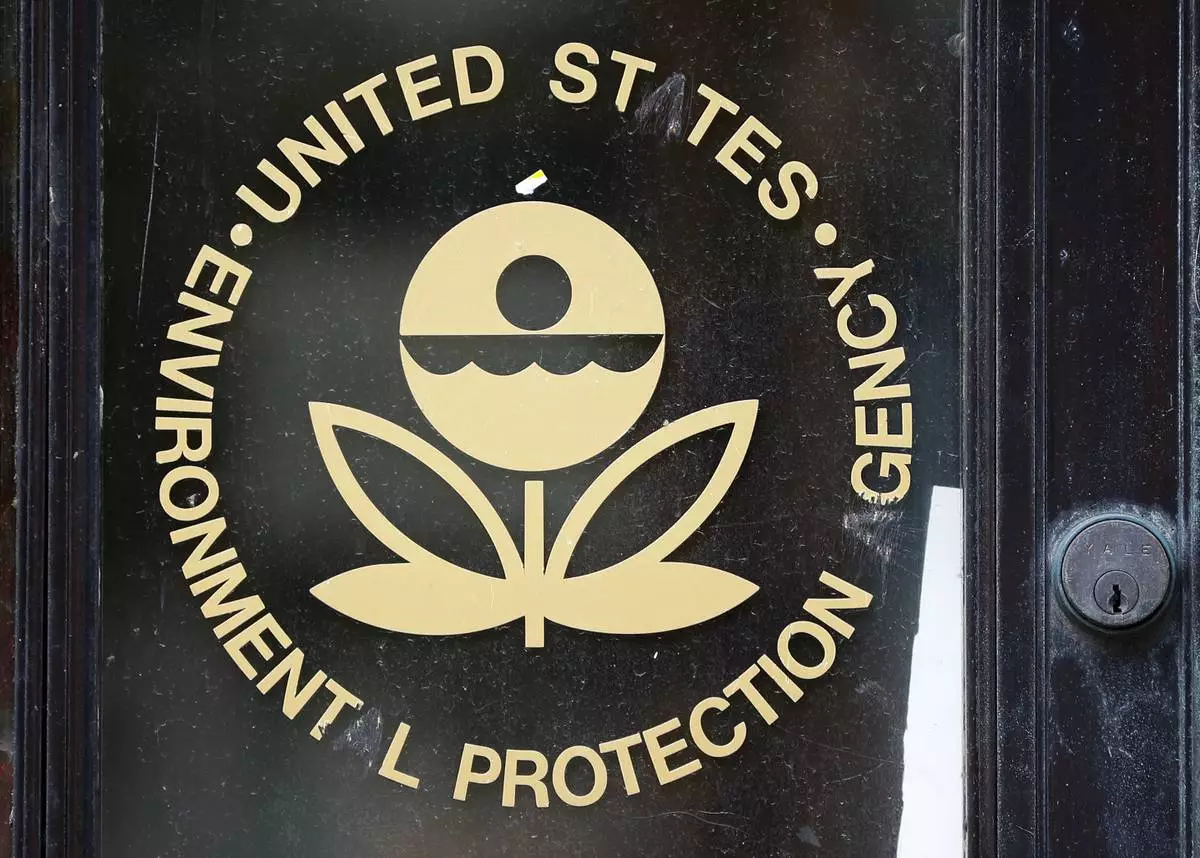
FILE - The logo for the EPA with the letters 'A' scratched out at the Environmental Protection Agency Building in Washington, Sept. 21, 2017. (AP Photo/Pablo Martinez Monsivais, File)
PARIS (AP) — France pledged to provide a 100-million euro ($108-million) package to support Lebanon at an international conference Thursday, as President Emmanuel Macron said “massive aid” is needed to support the country where war between Hezbollah militants and Israel has displaced a million people, killed over 2,500 and deepened an economic crisis.
“In the immediate term, massive aid is needed for the Lebanese population, both for the hundreds of thousands of people displaced by the war and for the communities hosting them,” Macron said in his opening speech at the conference.
French organizers hope participants’ financial pledges of humanitarian aid will meet the $426 million the United Nations says is urgently needed.
Italy this week announced new aid of 10 million euros ($10.8 million) and Germany on Wednesday pledged an additional 60 million euros ($64.7 million) for people in Lebanon.
Macron condemned Israel for continuing its military operations in Lebanon, "in the South, in Beirut, elsewhere, and that the number of civilian victims continues to rise,” and reiterated his call for a ceasefire.
Paris also seeks to help restore Lebanon's sovereignty and strengthen its institutions. The country, where Hezbollah effectively operates as a state within a state, has been without a president for two years while political factions fail to agree on a new one.
But the international conference comes as critics say French President Emmanuel Macron’s diplomatic approach in the Middle East has been blurred by his apparent evolving approach and sometimes chaotic communication.
Still, France's historic links with Lebanon, a former colony, and its influential diplomacy give Paris momentum to coordinate “a proper response to the massive challenge that the war in Lebanon now poses,” said Middle East expert Rym Montaz, editor in chief of Carnegie Europe’s blog Strategic Europe.
The French "are trying to make sure that international donors get to hear firsthand from the actors on the ground in Lebanon who can best describe the most immediate needs caused by the Israeli aggression that has forcibly displaced 20% of the Lebanese population over the course of two weeks,” she said.
Israel in the past month has launched a major aerial bombardment and ground invasion of Lebanon as it targets Hezbollah, with strikes hitting the capital, Beirut, and elsewhere.
The International Organization for Migration has said about 800,000 people are displaced, with many now in overcrowded shelters, while others have fled across the border into Syria.
The cash-strapped Lebanese government is ill-prepared to deal with the crisis or the increased demands on its health system. A number of hospitals have been evacuated because of nearby airstrikes and fears that they might be targeted.
In recent weeks, Macron appeared to toughen his stance against Israel while repeatedly calling for a cease-fire in both Lebanon and Gaza, condemning the “unbearable human toll.” He reiterated his call on Monday while speaking by phone with Israeli Prime Minister Benjamin Netanyahu, his office said.
There have been recent tensions between the French and Israeli leaders, especially after Macron called for a halt to arms exports for use in Gaza.
Macron has also strongly condemned the “deliberate” targeting by Israel of U.N. peacekeepers in southern Lebanon, which Israel has denied.
Thursday's conference involves ministers and officials from over 70 countries and international organizations, including the European Union and regional partners, Macron’s office said. Acting Lebanese Prime Minister Najib Mikati, who met with Macron on Wednesday, will attend.
France also aims at coordinating international support to strengthen Lebanon’s armed forces so they can “deploy more broadly and efficiently” in the country's south as part of a potential deal to end the war. Such a deal could see Hezbollah withdraw its forces from the border.
International support may include equipment, training and financial aid to hire troops and ensure the army's daily needs, Macron’s office said.
Lebanon's army has been hit hard by five years of economic crisis. It has an aging arsenal and no air defenses, leaving it in no position to defend against Israeli incursions or confront Hezbollah.
The Lebanese army has about 80,000 troops, around 5,000 of them deployed in the south. Hezbollah has more than 100,000 fighters, according to the militant group’s late leader, Hassan Nasrallah. The militant group's arsenal — built with support from Iran — is more advanced.
Conference participants also are to discuss how to support the 10,500-soldier-strong U.N. peacekeeping mission, UNIFIL. European nations including France, Italy and Spain provide a third of its troops.
Italy, which has over 1,000 troops in the UNIFIL, is notably pushing for the peacekeeping force to be strengthened to “be able to face the new situation” on the ground, an Italian diplomat said, speaking anonymously to discuss ongoing talks.
“What we do know is that without a strengthened Lebanese armed forces and UNIFIL, there can be no sustainable peace and stability at the border between Lebanon and Israel,” Montaz said. “As such, the French efforts are important and crucial for the way forward.”
AP writer Abby Sewell in Beirut, Lebanon, contributed.

French President Emmanuel Macron welcomes Lebanese caretaker Prime Minister Najib Mikati, left, Wednesday, Oct. 23, 2024 at the Elysee Palace in Paris. (AP Photo/Louise Delmotte)
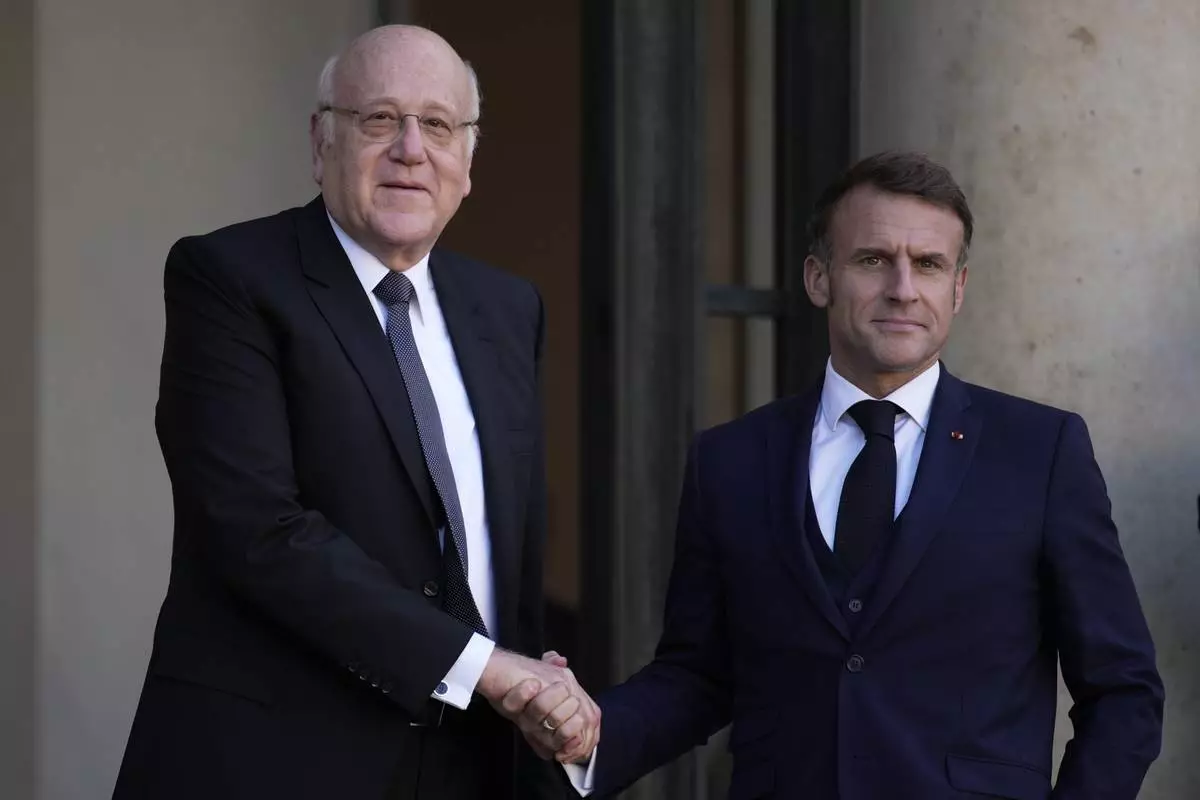
French President Emmanuel Macron welcomes Lebanese caretaker Prime Minister Najib Mikati, left, Wednesday, Oct. 23, 2024 at the Elysee Palace in Paris. (AP Photo/Louise Delmotte)



